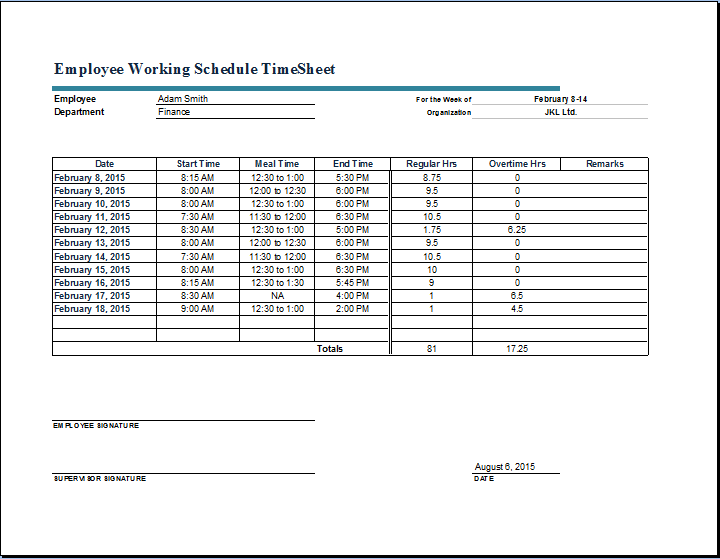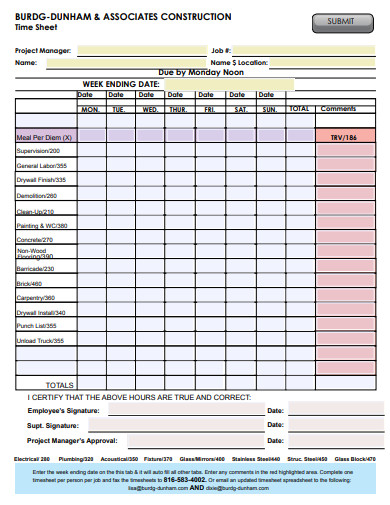

If you’re not already doing so, consider implementing a key card access system that tracks when employees enter and exit your facility. You can avoid potentially deflating habits toward employees by relying on technology to handle the task for you. While there’s nothing wrong with being aware of your employees’ arrival and dismissal habits, be cautious of becoming a micromanager.
#WORK CLOCK IN SHEET HOW TO#
Training supervisors on how to spot time clock scamming is often your first defense when it comes to ensuring employees are following time and attendance policies. Would you accurately remember how long you took lunch two weeks ago? Probably not. Though not necessarily fraud, some employees fill in time sheets at the end of their work period – days or even weeks since they worked those hours. Maybe your time system doesn’t track hours in real-time and the supervisor didn’t know whose hours were headed into overtime, but unless you have the data in front of you, there’s no way to tell. Maybe Ellen is more suited to get the job done right. Now, granted, there may be other factors involved. If the scheduler prefers Ellen, you may unnecessarily be paying time-and-a-half to get that job done. For example, if a project comes in that must be done in a hurry, would you hand it to Ellen, who is already into overtime? Or to Dan, who has time to finish the job within his 40-hour work week? Though collusion with another coworker may not be common, it happens.


The less you have to rekey your time and attendance information, the more accurate your data and the more accurate your payroll. In addition to outright fraud, this kind of system is prone to typos and mistakes, and any handwritten time records are also at the mercy of legible handwriting. If your attendance data has to be retyped from time sheets or time cards into a payroll system, a less-than-principled typist can easily change the numbers. In a year, that could add up to an entire extra week’s worth of pay. If your company policy is to round up to the next 15 minutes, even intentionally clocking out at 5:01 can buy 14 minutes of extra work credit every day.

Unless your company has attentive managers who have the time and diligence to double-check, you could be paying employees for work hours they didn’t earn.Įven with machine-stamped time cards, people find ways to inflate hours – sometimes waiting to clock out long after they’ve stopped working. Here are five common ways your employees can dupe your time and attendance system. Your job is to stay one step ahead of any potential deception. The opportunity for time clock fraud exists and unfortunately some employees will try to profit from your loss. Multiply that by a couple people, and you’ve got a serious problem on your hands. With overtime at the time-and-a-half rate of $15, you’re paying an extra $30 a week. Unbeknownst to you, he also claims two hours of overtime (that he didn’t earn) each week. When it comes to time clock fraud, even padding each work day with just a few extra minutes adds up.įor example, let’s say you pay someone $10 an hour 40 hours a week. While most employees are honest, there are usually a few you might want to keep your eye on. He’s adding to his pocket and taking away from your bottom line in the process. Only now he’s an adult, and he’s trying to figure out a way to scam his company time sheets. What is time clock or time card fraud? Well, remember that kid from elementary school who was always trying to figure out a way to change the grades on his report card? He’s still out there.


 0 kommentar(er)
0 kommentar(er)
